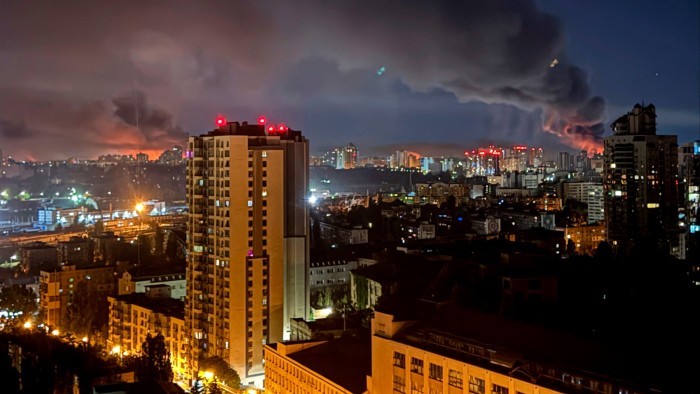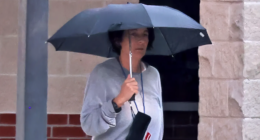Share this @internewscast.com
Stay informed with free updates
Brussels is in a rush to find solutions to fill a potential $19 billion gap in Ukraine’s budget for next year. This urgency comes amidst decreased backing from the US and the dwindling likelihood of a peace agreement with Russia.
The European Commission is actively engaging with EU countries to consider several strategies. Among these are providing military aid to Ukraine as off-budget grants, advancing loans from an existing $50 billion G7 support initiative for Kyiv, and potentially utilizing Russian state resources frozen within the EU. These discussions were confirmed by various sources familiar with the matter.
Ukraine’s projected budget gap next year is not yet covered by external financing.
“There is increasing worry about the upcoming year,” expressed a senior EU official engaged in talks with Kyiv. “Many parties that expected a ceasefire deal this year to alleviate Ukraine’s financial issues are now reassessing their expenditures and acknowledging that there is a financial gap, no matter how the situation is approached.”
The commission has already had to adjust outlays from Ukraine-related funding streams during 2025, officials told the Financial Times, in response to the extended conflict and lack of confidence in an imminent ceasefire with Moscow.
The urgency in Brussels to rustle up fresh funding comes ahead of a summit focused on funding Ukraine’s reconstruction needs in Rome later this week, which European Commission president Ursula von der Leyen will attend.
The IMF estimates that Ukraine’s financing needs for next year are covered, but that is premised on the war ending this year or in the middle of 2026 — a scenario which Ukraine and the EU do not share.

IMF managing director Kristalina Georgieva said last month that the Fund “will assess whether this financing gap is going to increase and will require further financing on the external aid”.
The goal is to ensure that Kyiv’s needs are covered well in advance of the winter, especially given the uncertain prospects for further US military support, said one EU diplomat.
One proposal, shared by Kyiv with G7 countries and under consideration by the European Commission, is to channel military support to Ukraine as bilateral grants that would be accounted for separately as an “off-budget external transfer”, while at the same time counting towards national defence spending targets.
This would serve the double goal of contributing to Nato pledges to increase national defence spending to 5 per cent of GDP while providing support to Ukraine. “Instead of duplicating capabilities, European allies could co-finance Ukrainian forces — treating it as a service Ukraine provides to enhance continental security,” Kyiv wrote in a paper shared with G7 allies and seen by the Financial Times.
The commission was set to discuss this and other options with EU finance ministers on Monday evening, two people familiar with the matter said.
“Clearly the military support for Ukraine that member states are giving are not only funds for the defence of Ukraine but for the defence of Europe, and some of that of course will count as defence spending,” said one senior EU diplomat.
Another option is to anticipate disbursements from an existing $50bn G7 scheme that issues loans to Kyiv on the back of profits from Russian state assets immobilised in the West.
Without a ceasefire to boost Ukraine’s domestic economy, Kyiv expects a shortfall of at least $8bn for 2026 even if some of the pledged amounts can be brought forward, from partners including the EU, Japan and US. If that does not happen, then the financing gap could reach $19bn.
A further option could be to extract more value from the Russian immobilised assets, by reinvesting them in riskier asset classes — while devising a way to share responsibility for potentially greater financial losses that would not make Belgium, where most of the assets are held, solely liable for them.
“We are exploring those options including the possibility to further leverage the use of Russia’s immobilised assets,” EU economy commissioner Valdis Dombrovskis said last month.












